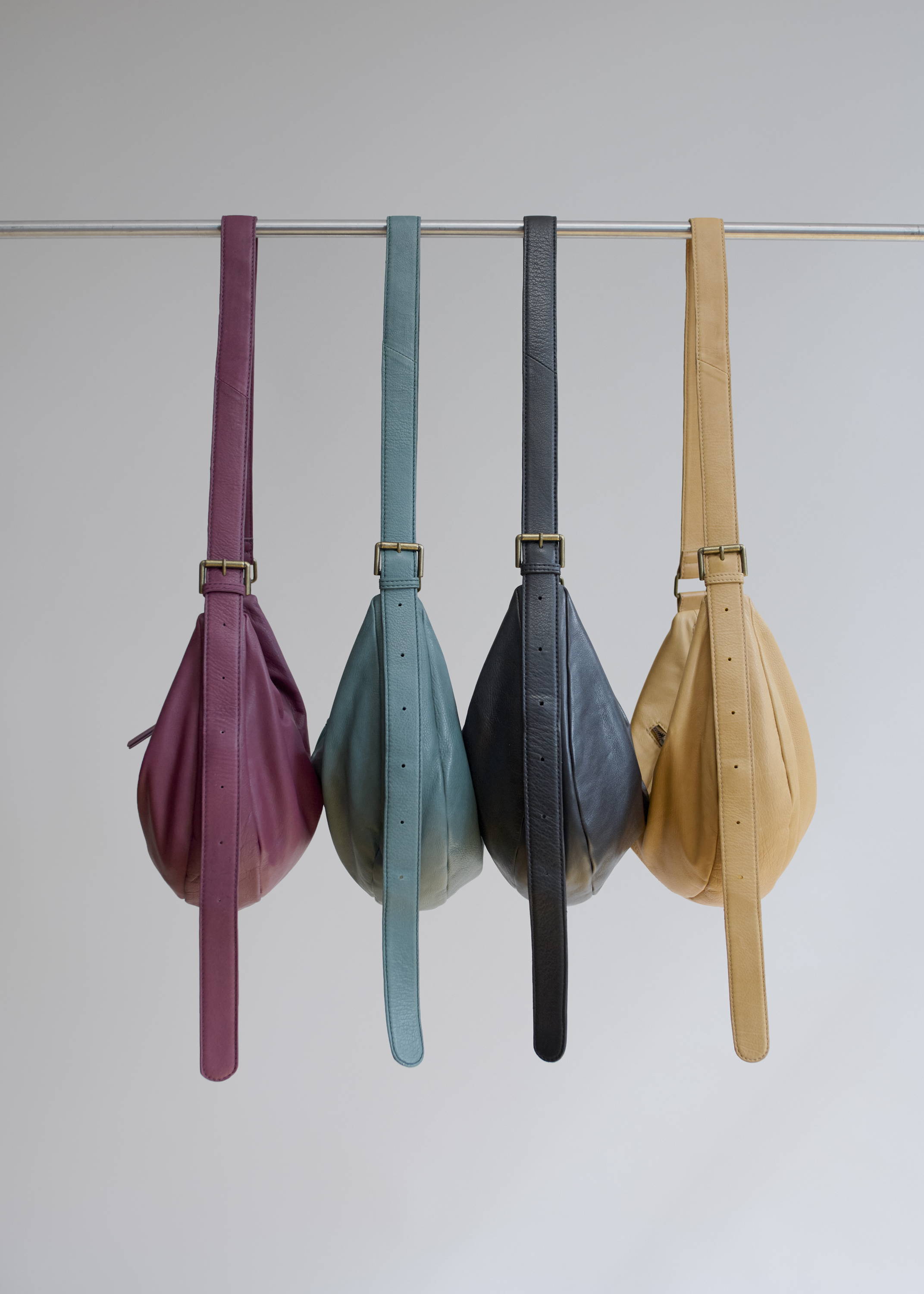
What Is Patent Leather? A Complete Guide
Patent leather is a distinctive, high-gloss material common in fashion and accessories. Its smooth, shiny finish makes it a unique alternative to full-grain leather handbags, shoes, and belts. But what exactly is patent leather, how is it made, and how does it compare to other types of leather? Let's dive into its origins, production process, uses, and the best ways to care for it.
What Is Patent Leather?
Known for its glossy, mirror-like finish, patent leather is coated leather achieved by applying a plastic or lacquer layer. This coating gives it a reflective shine and makes it highly water-resistant. Unlike suede leather with a soft, textured surface that absorbs moisture and develops wear marks over time, patent leather retains its glossy appearance.

How Is Patent Leather Made?
The production process of patent leather begins with a fine-grained piece of leather. Manufacturers coat this leather with multiple layers of plastic or acrylic lacquer to achieve the desired glossy effect. They carefully apply and then dry each layer, ensuring the finish remains smooth and durable. After coating, they polish and buff the leather to enhance its shine.
Coating Process
Patent leather gets its signature look through a synthetic coating made from polyurethane, acrylic, or a mixture of oils and waxes. Manufacturers apply this coating in layers, buffing and polishing each layer before applying the next one. This process gives the leather its characteristic shine and increases its resistance to wear and tear.
Types of Coatings
The coatings for patent leather can vary depending on the desired finish. Some manufacturers use acrylic compounds for a lightweight finish. In contrast, others use traditional oils and waxes to create a more durable surface. These coatings determine the appearance and impact the leather's flexibility and lifespan.
Common Uses of Patent Leather
Patent leather is standard in aesthetic fashion, with major fashion houses regularly incorporating it into their collections. It's also made waves in sports fashion, with patent leather appearing in sneakers, giving them a polished, standout look.
Some of the most common uses include:
- Shoes: Patent leather shoes are popular for both formal and casual wear. They add a polished, elegant look to dress shoes, pumps, and boots.
- Handbags: High-end designers use patent leather to create modern handbags, providing a sleek and sophisticated finish.
- Belts and accessories: Patent leather is standard in belts, wallets, and other accessories, adding a glossy shine to complement any outfit.
Pros and Cons of Patent Leather
|
Pros |
Cons |
|
Glossy Appearance: Its high-shine surface adds a luxurious, polished look to accessories. |
Susceptibility to Scratches: The shiny finish can easily show scuffs and scratches. |
|
Waterproof Qualities: Patent leather is ideal for wet conditions and is resistant to moisture and stains. |
Lack of Breathability: Patent leather does not breathe as well as natural leather, which can affect your comfort, especially in shoes. |
|
Durability: The coating reinforces the leather, making it resistant to wear and tear. |
Stiffness: The coating can make patent leather stiffer, reducing its flexibility and comfort in some products. |
|
Easy to Clean: A damp cloth can wipe out Most spills and stains. |
Limited Color Options: Patent leather often comes in neutral colors like black, beige, or red, with fewer vibrant options. |
Patent Leather vs. Other Types of Leather
Patent leather differs from other types of leather in various ways, especially in appearance, maintenance, and flexibility. Here’s how it compares to some common alternatives:
Patent Leather vs. Full-Grain Leather
Full-grain leather develops a rich patina that adds character over time. It is more durable and ages well. It is more expensive but lasts decades, making it ideal for high-quality goods. Patent leather, on the other hand, keeps its glossy finish without forming a patina but requires more care to avoid scuffs.
Although full-grain leather is typically pricier, we support sustainable leather practices and ethical sourcing at Latico. This ensures that our leather is responsibly sourced, minimizing the environmental impact.
Patent Leather vs. Bonded Leather
Bonded leather, made from leather scraps and polyurethane, mimics genuine leather but lacks the strength of full-grain or patent leather. It wears out faster and offers less durability, making patent leather the more durable.
Patent Leather vs. Faux Leather
Faux or synthetic leather can imitate the shine of patent leather but doesn’t offer the same longevity or quality. While faux leather is more affordable and versatile in design, it doesn’t age well compared to patent leather.
Patent Leather vs. PU Leather
A synthetic alternative, PU leather can have a similar high-gloss finish to patent leather but is less durable and cannot age well. While PU leather is more affordable and flexible, it doesn’t offer the same quality or longevity as patent leather, especially for items like shoes or handbags that require durability.

Caring for Patent Leather
Proper care is essential to maintaining the glossy appearance of patent leather. Despite its water-resistant qualities, patent leather can lose its shine if it accumulates dust or dirt. Here are some tips to keep your patent leather looking as good as new:
Cleaning Techniques
To clean patent leather, use a soft microfiber cloth to remove dust and fingerprints. You can use a mild soap and water solution for tougher stains but avoid soaking the leather. Gently wipe the surface with a damp cloth and avoid scrubbing, as this can damage the finish. To restore shine to scuffed areas, apply a small amount of petroleum jelly or olive oil to a cloth and gently buff the surface.
Storage Tips
Store patent leather items in a cool, dry place, away from direct sunlight. Excessive heat and light can cause the leather to crack or fade. Use dust bags or soft covers to prevent scratches when storing shoes, handbags, or belts. Avoid stacking patent leather items on each other to prevent indentations or marks.
Frequently Asked Questions
What is patent leather made of?
Patent leather is typically made from coated leather with a glossy, high-shine finish.
How do you clean patent leather?
You can clean patent leather with a soft cloth, mild soap, or a special leather cleaner.
Is patent leather genuine leather?
Yes, patent leather is made from genuine leather coated with a plastic or lacquer finish.
Is patent leather waterproof?
Patent leather is water-resistant but not fully waterproof.
Does patent leather crack?
Yes, patent leather can crack, exceptionally, if not cared for or stored correctly.

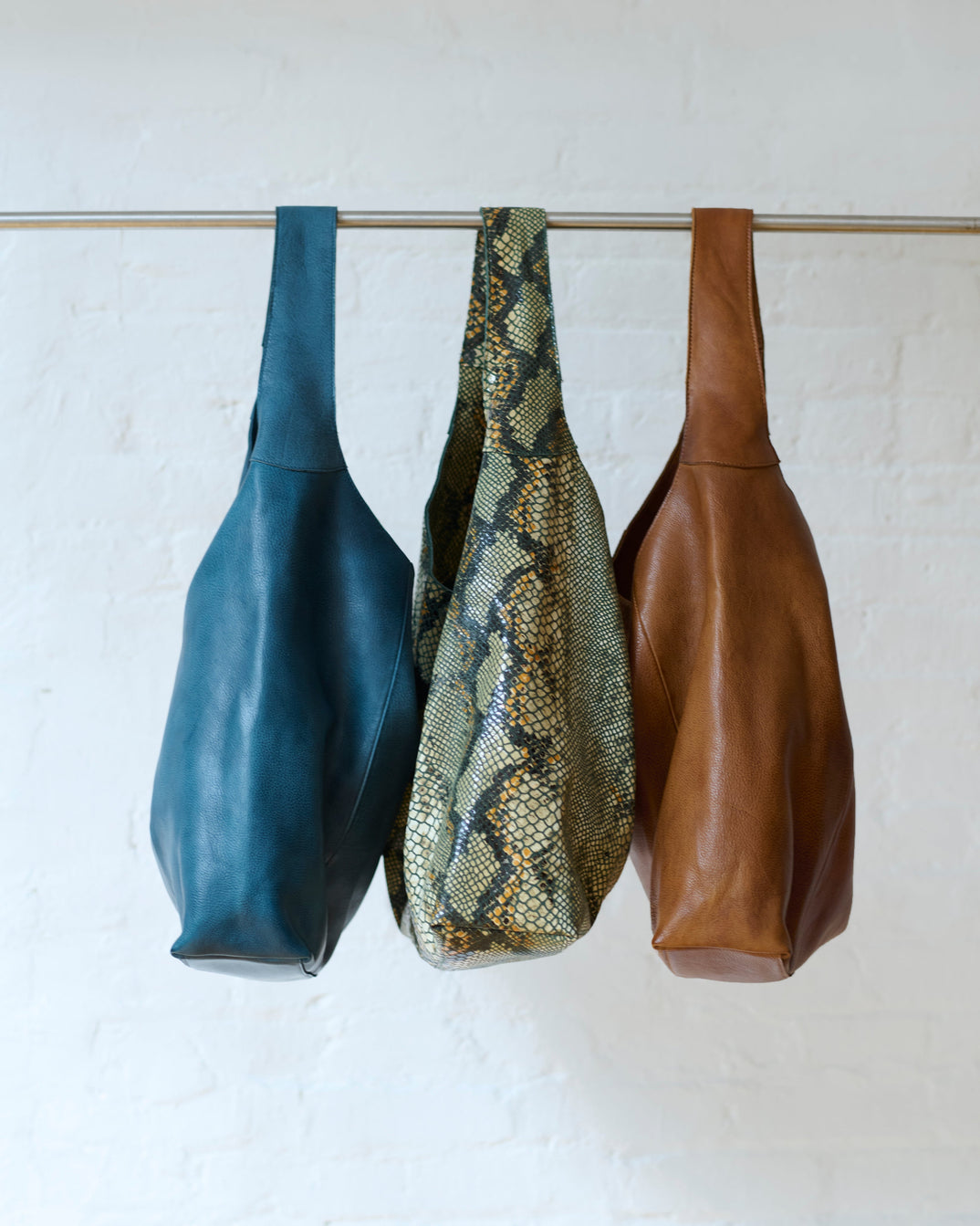
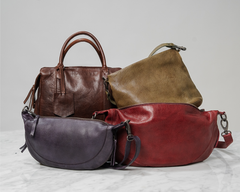


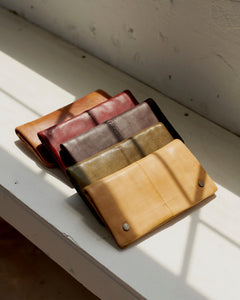

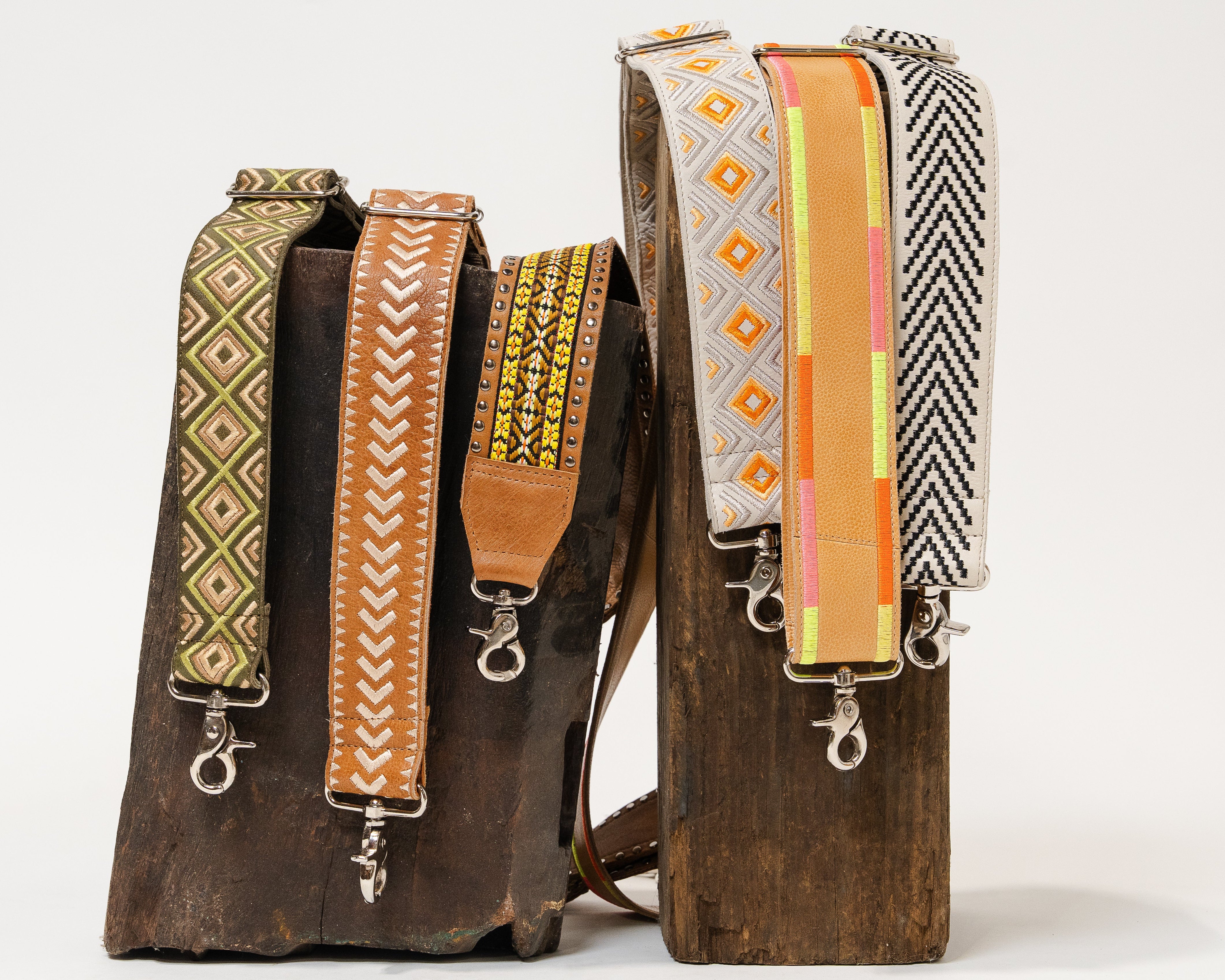
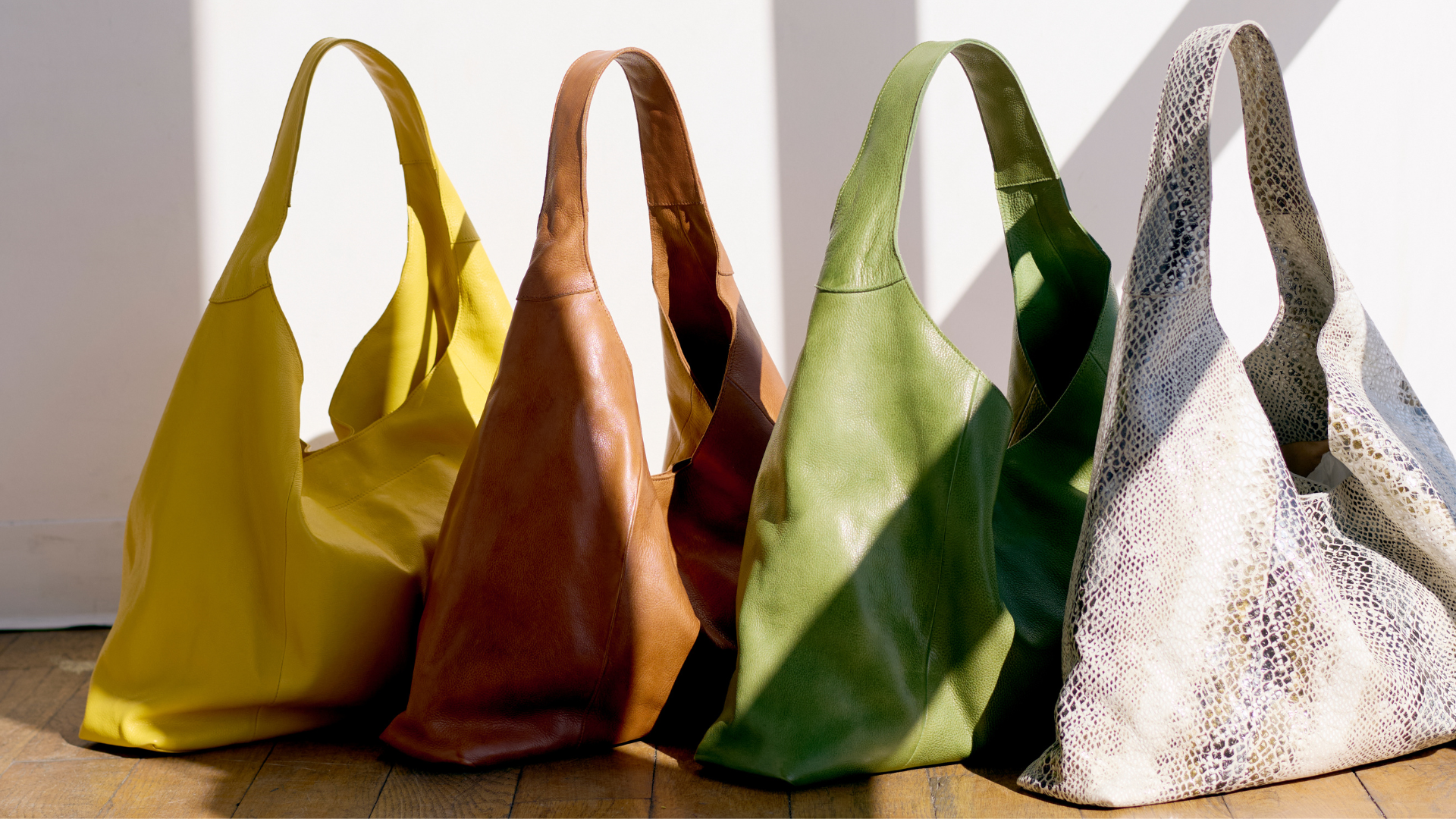
 Black
Black Bubble Black
Bubble Black Charcoal
Charcoal Cognac
Cognac Brown
Brown Cafe
Cafe Walnut
Walnut Almond
Almond Saddle
Saddle Eggplant
Eggplant Oxblood
Oxblood Burgundy
Burgundy Aubergine
Aubergine Tan
Tan Hazel
Hazel Ballet Slipper
Ballet Slipper Blush
Blush Camel
Camel Red
Red Orange
Orange Natural
Natural Burnt Orange
Burnt Orange Poppy
Poppy Plum
Plum Rosa
Rosa White
White Oat
Oat Grey
Grey Cobra
Cobra Desert Trail
Desert Trail Denim
Denim Indigo
Indigo Emerald
Emerald Teal
Teal Turquoise
Turquoise Sky Blue
Sky Blue Grass
Grass Green
Green Moss
Moss Olive
Olive Yellow
Yellow Lemon
Lemon Honey
Honey Chartreuse
Chartreuse Mustard
Mustard
